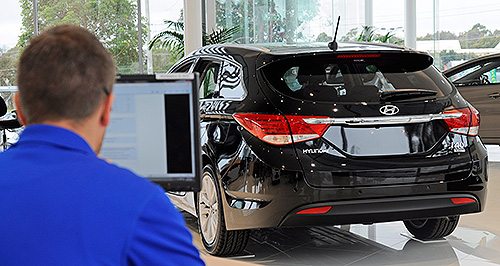Make / Model Search
News - Market Insight - Market Insight 2014Auto industry employment on rise: reportMixed fortunes: Employment in the automotive repair and maintenance sector is on the rise but, at the same time, vehicle body repairers are doing it tough, a new study has found. Study finds growth, but some areas of pain, in auto industry outside manufacturingGallery Click to see larger images 28 Mar 2014 By TERRY MARTIN EMPLOYMENT in the Australian automotive industry actually increased last financial year despite the crisis in the car manufacturing sector that has culminated in Ford, Holden and Toyota’s decision to close down their production operations here in 2016 and 2017 respectively. New figures published by Auto Skills Australia (ASA) – the government-funded national automotive training body – put the aggregate employment across the entire automotive industry at an estimated 361,187 people for 2012/13, which represents a 4132 (or 1.2 per cent) increase over the previous year. Restricting growth, however, were losses of 3500 employees in the car- and parts-making sector – now down to 45,500 – while some areas outside manufacturing have also hit upon hard times, with motor vehicle dealers and fuel retailers experiencing significant losses in employment, particularly among small businesses. Detailing the figures in its ‘2014 Automotive Environmental Scan’, ASA says the employment contraction in the car production and components sector has been “more than compensated” by growth in other areas, particularly motor vehicle and parts wholesaling (up 5750 employees to 26,250 in 2012/13), automotive repair and maintenance (up 5500 to 126,500) and motor vehicle parts and tyre retailing (up 2250 to 27,000). “Even before the announcement of the (Ford, Holden and Toyota) closures, the sales, service and repairs sectors comprised the largest portion of the industry,” the report says. “Career opportunities will primarily be confined to these sectors in the future. “However, this scenario is not without its own unique set of challenges as these sectors are also in transition. They are characterised by ongoing business rationalisation and consolidation, which will have labour market implications.” The report emphasises that small businesses, which comprise around 94 per cent of the Australian automotive industry, are facing “severe pressures and are closing in increased numbers, particularly sole proprietor and partnership businesses”. Motor vehicle retailers are among those experiencing difficulties, with employment numbers in this sector down 4500 last financial year to 64,250. The report also shows that the rate of business closures across the automotive industry increased 70 per cent between June 2011 and June 2012, with 812 fewer registered businesses. Of these, 45 car retailing business closures were recorded, bringing the total number of dealers operating to 4745. However, by far the hardest-hit area across the industry was the motor vehicle body repair sub-sector. Despite solid employment growth in the repair and maintenance area, 266 automotive body, paint and interior repair businesses closed over the 12-month period ending June 2012. According to the report, the key factors behind this were – and continue to be – a reduction in vehicle accident rates, the high cost of equipment and training required to repair modern vehicles, insurance company quality requirements and a slump in consumer spending. “Nationally, with around 11,000 small businesses operating in automotive body, paint and interior repairs and almost half of these sole proprietor businesses, these pressures could potentially translate into many thousands of shop closures over the next few years,” the report says. “Commensurate with these business closures would be a loss of skills and critical mass within the industry.” The closure of the three remaining Australian car manufacturers will cost more than 6500 jobs directly – at least 1200 at Ford, 2900 at Holden and 2500 at Toyota – and many thousands more in parts supply and other related areas. As part of its report, ASA surveyed 550 automotive businesses – said to represent an even spread across sectors and states – in October last year about current business conditions and expectations, and found 44 per cent were experiencing variable business conditions, with a quarter reporting below-average growth and 20 per cent reporting positive conditions. Significantly, the survey also found that the majority of respondents (55 per cent) were cautiously expecting growth over the next 12 months.  Read more |
Click to shareMarket Insight articlesResearch Market Insight Motor industry news |













Facebook Twitter Instagram